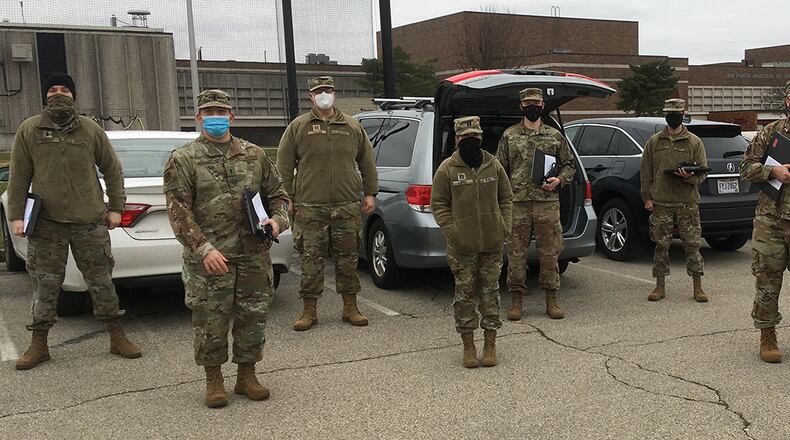“The SENG 621 course starts with space as a warfighting domain, and utilizes modeling and simulation to help demonstrate what warfighting in space really means,” said David Meyer, course instructor.
“Throughout the Department of Defense, there is a real shortage of people who understand how modeling and simulation works, and one of the outcomes of this course is that it allows students to learn how to critically evaluate the results of models and simulations that are given to them. Upon completion, students will know how to apply this technology for solving real-world space problems.”
Applications used by the students include the computer language Python for scripting and writing code, systems tool kit, a multidomain simulation platform, and AFSIM, an Air Force-owned software-simulation tool used to assess how military systems and platforms function throughout the course of a mission.
“SENG 621 brought all the pieces of the bigger picture together,” said 1st Lt. Kyla Brown, an AFIT Master of Science student. “The course enabled students to bring the tenets and best practices of model-based systems engineering into mission simulation. We were able to develop the skills to simulate a mission of a system that we designed to increase mission assurance using external-simulation tools like STK.”
In-house application of MBSE is being used on AFIT’s most recent technology, Grissom, a space-qualified 6U CubeSat bus that supports hands-on student education and research. Students will use Grissom 6U buses in both classroom and thesis work to design, build and test CubeSat missions.
This effort will leverage significant bus component and core-flight software development performed at AFIT over the past few years and include in-house hardware and software development, bus integration and environmental testing.
“Applying MBSE to fictional systems in our classes was helpful to facilitate learning and applying the concepts, but nothing really compares to working on a real system such as the Grissom Project,” Brown said. “MBSE dives deep into system design and resolution of conflicts in the design and mission. In addition, it’s really rewarding as a student to have the opportunity to contribute to a mission that benefits the DOD.
“Attending AFIT is an amazing route to receive an education that can be applied to an Air Force or Space Force career moving forward. Students have countless opportunities to contribute to real missions and research that are on the cutting edge of defense technology, such as system/mission modeling and simulation. More and more organizations in DOD are breaking into the world of modeling and simulation, and knowledgeable experts in these disciplines are essential for meaningful forward progress.”
The Air Force Institute of Technology at Wright-Patterson Air Force Base is the Air Force’s graduate school of engineering and a student’s first choice for advanced academic and career-long professional continuing education.
For more information about graduate or postdoctorate degrees in astronautical engineering or space systems, visit the CSRA website at www.afit.edu/CSRA/ or call 937-255-6565, ext. 4753.
About the Author
